Trekking Guide to Wild Nepal
Step away from the more popular trekking regions of Everest and the Annapurnas, onto the enticing trails of Wild Nepal, and you may find that you have the path all to yourself.
From sculpted desert landscapes, to crystal blue lakes and from remote mountain monasteries to rarely visited villages there is a fascinating and rewarding world of delights to discover for the committed trekker. Here’s our guide to the key trekking regions within Wild Nepal.
Mustang & Dolpo
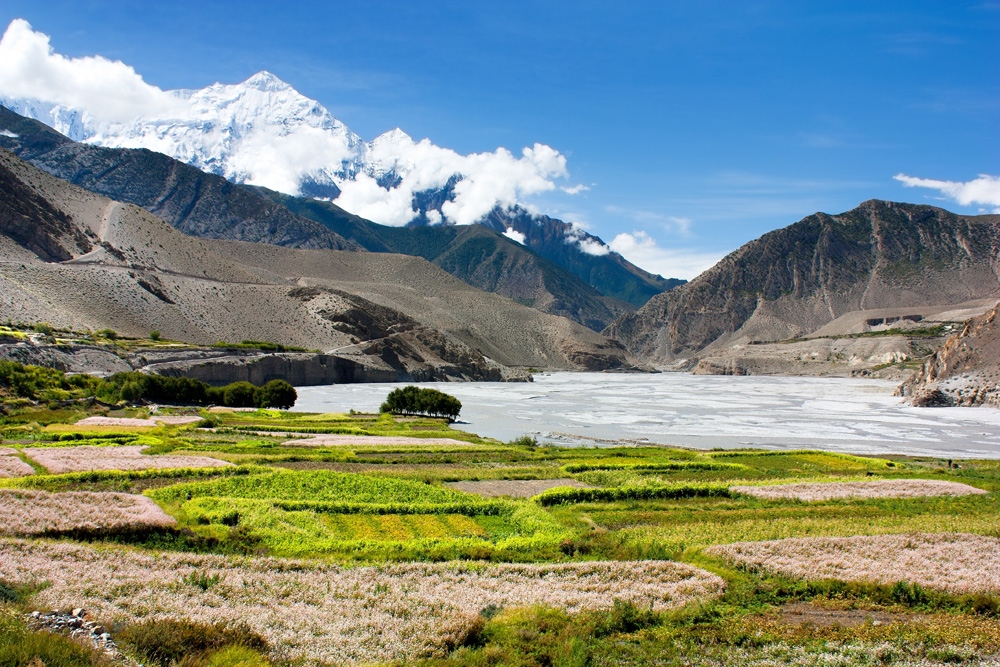
Mustang and Dolpo offer an alternative Nepal that is wild, remote and little-changed over hundreds of years. Isolated from the outside world for centuries the local people have retained their unique cultural identity and the area is often considered more Tibetan than Tibet. The landscape is also very distinctive, evoking images of high desert scenery, abandoned cave dwellings, ancient Tibetan monasteries and, of course, the elusive snow leopard. It’s also a region where, unusually for Nepal, you can trek in the summer months.
Where is it?
Mustang lies directly north of the Annapurnas, abutting the border with Tibet whilst Dolpo is further west. The two are linked by a challenging trek across high passes.
How to get there
To reach either Dolpo or Mustang from Kathmandu you need to take two flights. For Dolpo you first fly to Nepalganj, close to the Indian border, before taking a 45 minute flight to Juphal. For treks in Mustang a flight to Pokhara is followed by a very short one to Jomsom.
When to go
The summer and early autumn is the time to trek in Dolpo or Mustang. This is because the region lays in the rain shadow of the Himalaya so does not receive the monsoon rains the affect much of the rest of the Himalaya.
The mountains of the region
This is a very high altitude desert region without the iconic peaks of other trekking regions in Nepal. However, Dhaulagiri, at 8,167m, lies just south of Mustang and its towering summit often dominates the skyline when trekking in the area.
The people of the region
Restricted access and the extreme isolation of Mustang and Dolpo has done much to preserve and protect the uniquely Tibetan culture, language and traditions of the region. Nearly all the people are Tibetan Buddhists and their beliefs and practices permeate all aspects of their lives - best witnessed in festivals such as the Tiji Festival held annually in Lo Manthang, the ancient capital of Mustang. In Dolpo, the people of the Tarap Valley still practice the pre-Buddhist Bon religion. As with their beliefs, the way of life of the local people has changed little over the centuries and is largely based around farming and agriculture with houses still often built of mud brick.
Treks in Mustang and Dolpo
Snow Leopard Trek, Upper Dolpo
Three weeks of superlative trekking that initially traces the route of Peter Mathiessen's famous novel that documented his journey through Dolpo in search of rare blue sheep and snow leopard. There are numerous highlights including Phuksundo Lake, Crystal Mountain, the Kang La Pass, ancient Shey Monastery and the beautiful Tarap Valley. Starting and finishing at Juphal it's a superb circuit with fabulous views and a genuine sense of isolation from the outside world.
An amazing trek that takes you on an unforgettable journey to the capital of Mustang, Lo Manthang. As you trek through this remote region, you will be surrounded by awe-inspiring scenery such as towering cliffs, peppered with intriguing cave dwellings and desert landscapes stretching for miles, all complete with a backdrop of the impressive snow-capped Himalaya. After completing your trek to Lo Manthang, you will return to Nepal’s culturally diverse capital, Kathmandu, with plenty of time to explore.
This exciting trek discovers some of the most remote corners of the Kingdom of Mustang.Trekking along sections of the western side of the Kali Gandaki valley, you reach the square-walled city of Lo Manthang. From here, you journey further into this mysterious kingdom, exploring its spectacular scenery and fascinating history. Your trek then takes you south, through an even more isolated part of the region, before returning to bustling Kathmandu, with time to soak up the atmosphere.
Five High Passes - Dolpo to Mustang
A trek that encompasses the very best of these remote regions of Wild Nepal. It begins at the airstrip in Juphal then passes by the dazzling waters of Phuksundo lake before crossing several high passes to enter Upper Dolpo which is largely uninhabited and stunningly pristine. You leave by the Ghami La at 5,700m ending the trek in Mustang. This is a challenging but immensely rewarding high Himalayan trek, ideal for the experienced trekker who enjoys splendid isolation.
Ganesh Himal
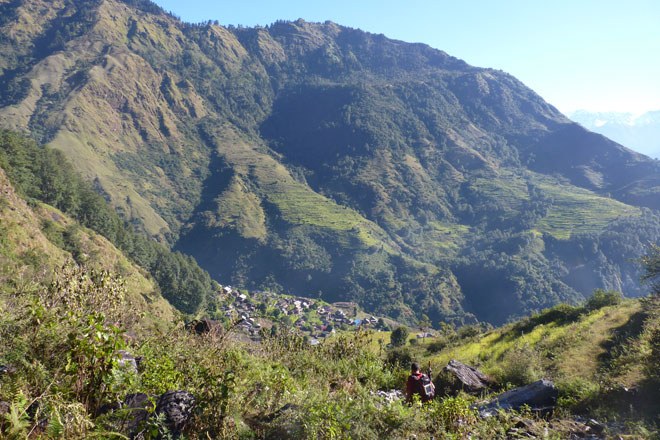
For a region so close to Kathmandu, with such a wealth of high peaks and gorgeous scenery, it is amazing that it has remained so off-the-beaten-track. In fact, it’s likely that you won’t meet any other trekkers or tourists whilst walking in the area. This wonderful sense of isolation, together with strikingly deep valleys, stunning mountain views and a network of paths between picturesque villages, make this a delightful region for trekking.
Where it is
The Ganesh Himal range is in northern central Nepal, only 70km from Kathmandu. At its most northerly point the range extends to the Tibetan border.
How to get there
This is an easily accessible region from Kathmandu – only a 4-5 hour drive to reach the old town of Arughat.
When to go
As with much of Nepal, the spring and autumn present the best time of the year to trek in the Ganesh Himal.
The mountains of the Ganesh Himal
The highest peak in the range is Ganesh I, 7,422m (also known as Yangra) and there are three other peaks over 7,000m plus fourteen over 6,000m. The name of the range comes from the elephant-headed Hindu deity and it is believed that the south face of Ganesh IV resembles an elephant.
The people of the region
The villages in the Ganesh Himal are an interesting ethnic mix of Gurung and Tamang people and you will encounter both Hindu and Buddhist traditions. Many of the Gurung men have served with the Gurkhas and their pensions bring much needed income into the region. The Tamangs are almost pure Tibetan having migrated from Tibet centuries ago. Many people in the region eke out a subsistence living from their small hillside farms where very traditional farming methods are still practiced.
Trekking in the Ganesh Himal
This trekking gem crosses the region from east to west with the high point of the trek the Pangsang La pass from where there are wonderful panoramas of the Nepalese Himalaya. The trails lead through villages surrounded by verdant terraces and a couple of days are spent trekking in indigenous forests with beautiful old trees.
Kangchenjunga
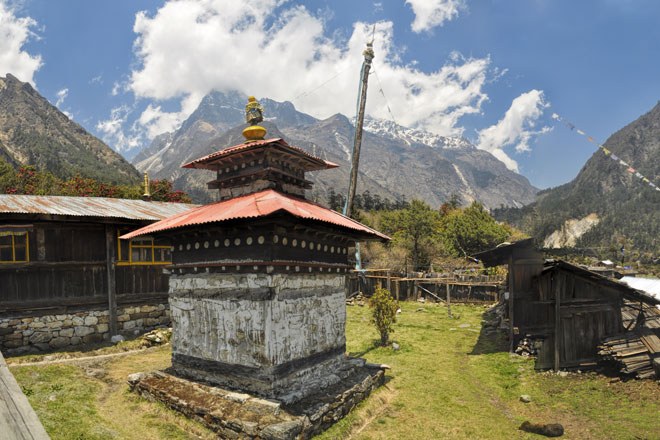
Sparsely populated and surrounded by some of the highest peaks in the world, trekking in the Kangchenjunga region is an immersive and exhilarating experience. With access to the area having been restricted until 1988 the trails are invitingly pristine and the flora and fauna fantastically rich and diverse. This is truly a wild and wonderful place where trekking is still a great adventure.
Where it is
Kangchenjunga is located in the very far east of Nepal on the border with Sikkim in India.
How to get there
To trek in the Kangchenjunga Himal you need to get to Taplejung which sits southwest of the mighty mountain. This is normally done by flying from Kathmandu or, on an overnight car drive from Kathmandu via Phidim.
Best time for trekking
Autumn is the premium trekking time for Kangchenjunga – particularly the month of October.
The mountains of the region
Until 1849, Kangchenjunga was thought to be the world’s highest mountain, but today’s accepted height of 8,586m ranks it third, after Everest and K2. It was first climbed in 1955 by Joe Brown and George Band. Kangchenjunga itself comprises a main peak plus 4 satellites – all over 8,000m. Indeed the name Kangchenjunga means Five Treasures of Snow and it is considered sacred by the people of Darjeeling and Sikkim. Along with Kangchenjunga, the himal comprises 16 summits over 7,000m as well as a host of peaks over 6,000m.
Trekking in the Kangchenjunga Himal
Kangchenjunga North & South Base Camps
This trek has two splendid objectives in the expedition base camps of Kangchenjunga. Starting with the trek to the southern one first the trail then strikes out across the Mirgin La and the Sinion La to the thrilling finale at Pangpema – the northern base camp. Breathtaking views provide ample reward for the rigours of trekking up to 5,000m.
Manaslu
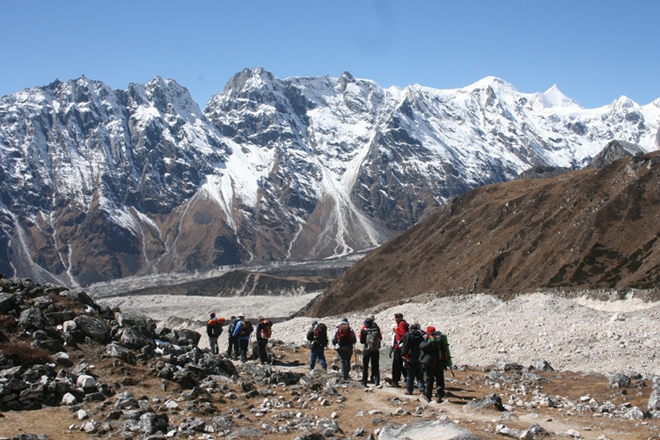
At 8,163m, Manaslu is the eighth highest peak in the world and has enticed climbers and trekkers to its environs for many years with its distinctive, beautiful summit. And it’s a region that doesn’t disappoint due to the sublime Himalayan scenery, diverse wildlife and welcoming villages and tea houses. A circuit of Manaslu is still considered one of the great treks of the world.
Where to find it
Manaslu is located in west central Nepal between the Ganesh Himal to the east and the Annapurnas to the west.
How to get there
A six hour drive from Kathmandu takes you to the riverside town of Arughat Bazaar at the foot of the Buri Bandaki valley.
When to go
Typically for Nepal, the spring and summer months, pre and post monsoon, are the perfect time for trekking around Manaslu.
The mountains of the region
Manaslu is of course the main attraction of the region although there are many other peaks in the himal over 7,000m including Himalchuli, Ngadi Chuli and Shringi. Manaslu was first climbed in 1956 by a Japanese expedition team. The region has been designated at the Manaslu Conservation Area and is home to numerous species of rare mammals and birds such as Golden Eagle, pandas and bears.
The people of the region
There are several ethnic groups living in the Manaslu region: the Gurungs,the Nubri and the Tsum. Divided geographically, the Tsum valley has remained more isolated and therefore its people have retained more of their Tibetan cultural traditions. Additionally, Gurungs can be found in the central hills and they are the main ethnic group to have joined the army as Gurkha soldiers.
Trekking in the Manaslu region
This world renowned trek provides a more remote alternative to the neighbouring circuit of the Annapurnas and it has equally spectacular scenery, big mountain views and fantastic trekking. There is strong cultural interest throughout and a 5,000m pass to cross in the Larkya La. There’s also a tremendous sense of achievement to be gained in completing a circuit of one of the ten highest mountains on the planet.
Langtang
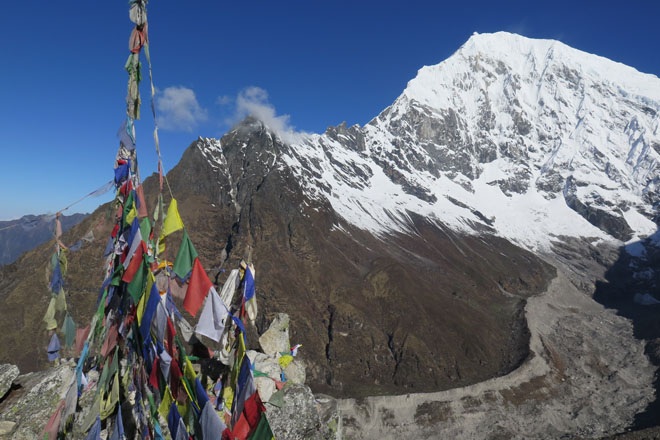
Similar to Ganesh Himal, the Langtang Valley is another trekking region within a short day's drive of Kathmandu. As no special permits are required to trek here (just an entry fee for the park), and altitudes on the trails are relatively low by Himalayan trekking standards, it is a very accessible option, making it an excellent alternative to the popular regions of Everest and the Annapurnas. The beautiful Langtang Valley was designated as Nepal's first national park in 1971 and although severely affected by the 2015 earthquake, it is now fully open for business and keen to welcome trekkers to its trails. Langtang can be sub-divided into three trekking areas: the Langtang Valley, Helambu and the Gosainkund Lakes, all of which have their own distinctive characteristics.
Where to find it
The Langtang National Park, embraces the Langtang Himal mountain range and is situated between the Kathmandu Valley and the Tibetan border.
How to get there
There are no flights into the Langtang region so you need to drive there. A journey of around 170km, taking between 6-8 hours, will get you to the town of Sybaru Besi which is the starting point for treks into the Langtang Valley.
When to go
Spring or autumn are the prime seasons to trek in Langtang. The region is particularly renowned for its colourful displays of rhododendron in the springtime especially on the trek up into the high Langtang Valley, whilst in the autumn larch trees in the forests at lower altitudes provide attractive autumnal shades.
The mountains of the region
As with most regions of Nepal, Langtang is blessed with a plethora of soaring, snow-clad Himalayan peaks. There are two over 7,000m: Langtang Lirung and Langtang Ri, and 11 in total over 6,000m. Although the mountains of the Langtang Himal are not so well known they nonetheless provide stunning panoramas particularly when trekking at the higher elevations of the Langtang Valley and the Gosainkund Lakes.
The people of the region
Helambu, in the south of the Langtang region, is of particular cultural interest. The tribal people of Upper Helambu call themselves Yolmo rather than Sherpas. Similar to the Sherpa people of the Khumbu (Everest region) they arrived in the region from Tibet in the 15th century. The Yolmo though have their own written script and language which is quite different to other Sherpas.
Trekking in the Langtang Region
This trek fully encompasses the varied landscapes, breathtaking views and distinct cultures of Langtang. Starting from Sybaru Besi, you first head into the high Langtang Valley along forested trails, before emerging above the tree line to reach Kyanjin Gompa at almost 4,000m. Here there are truly stunning vistas of the Langtang Himal. Next comes the rugged beauty of the sacred Gosainkund Lakes before crossing the Laurebina La, bedecked with prayer flags, and heading down into the Helambu Valley with its rich cultural heritage.
Read our Trekking Guide to the Everest Region.
Read our Trekking Guide to the Annapurna Region.